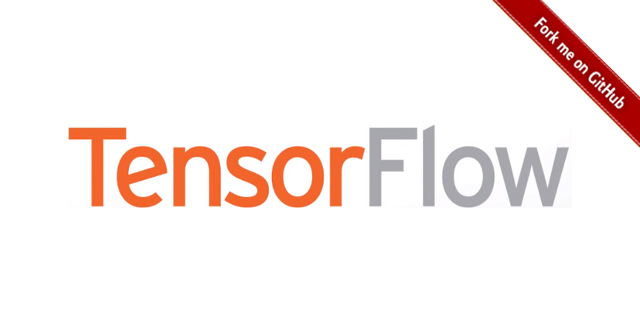
This week we’ve got stories about the potential nomination of Satoshi Nakamoto for the Nobel in economics, a ton of news from the American Astronomical Society’s Division of Planetary Sciences, news on the open-sourcing of Google’s machine-learning project TensorFlow, and an upcoming visit to North America by Hatsune Miku. Read on!
***
Nominating Nakamoto

For those interested in the growing field of cryptocurrency research, few pseudonyms are as well known as Satoshi Nakamoto. In 2008, someone going by that name published a white paper online titled “Bitcoin: A Peer-to-Peer Electronic Cash System,” a paper which is now generally understood to be the beginning of the current boom in cryptocurrencies. If anyone knows just who Satoshi Nakamoto is, they aren’t saying: the inventor of Bitcoin never revealed his identity and has now gone silent. We don’t even know if Satoshi Nakamoto is one person, a group of people, male, female, anything. But now he might be nominated for the Nobel Prize in economics. In a strange move, UCLA finance professor Bhagwan Chowdhry published a piece advocating the nomination for the reclusive inventor. It’s true that Bitcoin has changed finance as we know it, from the billions of dollars in the Bitcoin economy to the dozens of startups like Coinbase, Circle, and Gemini integrating with the fiat economy, and indeed, if he can be tracked down it would be great to see his work rewarded. But there’s just one problem: Chowdhry isn’t allowed to tell anyone who he’s nominating. So now the committee is going to have to look into it, to see if the whole process can even continue. Meanwhile Chowdhry says that until he resurfaces, he’ll happily accept the ten million Swedish Kronur cheque on the Bitcoin pioneer’s behalf: “Mr Nakamoto and I will settle later.”
Planetary Science

The American Astronomical Society’s Division of Planetary Sciences had their 47th annual meeting this week, and there’s tons of new planetary news. First, the latest compositional data on Ceres suggests the possibility that the dwarf planet in the asteroid belt might actually have formed much further out, though they’re still debating just what the data mean. Second, the furthest dwarf planet ever found has also been announced: V774104 (sexy name, right?) is 102 astronomical units out, or 102 times the distance from Earth to the Sun. The previous record holder was Eris at 97au. Third, thanks to new data downlinked from New Horizons, we’ve got more information than ever before on Pluto’s moons, Styx, Nix, Cerberos, and Hydra. among other things, they’re spinning! And fourth, scientists have announced the most exciting exoplanet discovered yet: at only 39 light-years away, GJ 1132b (another dead sexy name) is roughly the same size, mass, and density of Earth (even if it’s not in its star’s habitable zone), and it’s close enough that when the James Webb Telescope gets up in 2018, we should be able to use it to study its atmosphere. For more on the Ceres data (because there’s a lot of it) check out Emily Lakdawalla’s post on it over at the Planetary Society.
TensorFlow
Also this week, Google announced that it’s releasing TensorFlow to the world as an open source project. What does that mean? TensorFlow is a piece of software that teaches computers how to teach themselves. Google has used it to do things like train its speech recognition software and to intelligently respond to your e-mails for you. And now you can use it to your own nefarious ends, if you so choose. Over at tensorflow.org, there’s a link in the upper right corner inviting you to “fork me” (create your own derivative software) over at GitHub. I think it’s pretty safe to say this is going to drive a lot of innovation, even if you never hear about it in the news again. Check out Google’s press release or tensorflow.org for more.
Virtual Pop
Hatsune Miku is coming to North America. What does that mean? Hatsune Miku is a Japanese pop star with turquoise eyes and hair but she also, kind of isn’t. She’s a piece of software designed to turn the ideas of song writers and choreographers into an experience. She uses the voice of voice actress Saki Fujita and speech generation software to sing and perform songs written for her. The last time she was here, she showed up for a slightly confused David Letterman in 2010, but this time she’s going to be touring as the headlining act. Normally she’s a little more anime in appearance, but the image above is from Final Fantasy designer Tetsuya Nomura’s take. I don’t know, I quite like it. The Verge has more.
HR 2262
This week also saw the passage through the US Senate of a law designed to make space industry easier and more profitable — in the future. The “US Commercial Space Launch Competitiveness Act” (among other things) makes it so that if you go grab an asteroid and try mining it, what you mine is yours to sell. Optimistic and forward-thinking asteroid mining company Planetary Resources is, understandably, rather pleased by this, as, I’m sure, is Elon Musk. As Ars Technica is calling it, “if you can mine it in space, it’s yours.” Also in the bill is an extension of the International Space Station’s mission to 2024, which has been talked about for a year now but hasn’t been as close to official as it is now. Ars Technica has more on the story, as do the good folks at r/spacex.
ICYMI
There was plenty to talk about this week, so in case you missed any of it, here’s the weekly rundown:
- On Monday I discovered that “reptilians” need matchmaking services as much as the next guy
- On Tuesday I theorized that Amazon’s new brick-and-mortar store is about showrooms
- On Wednesday I talked about the different experiences of November 11 in Canada and in the US
- On Thursday I took a look at the “new, science-friendly” Canada
- On Friday Lindsey talked about the sexual assault evidence backlog
- And Yesterday, in light of the recent attack in Paris, I urged people to learn more about the situation
Go back and check out the ones you missed!
Best of the Rest
So much happened this week that I couldn’t cover, so here’s your weekly linkspam in bullet-point form:
- Someone’s invented a gun safety lock to make your dumb gun smart
- Someone else is getting close to mining the Pacific garbage patch for recyclable plastic
- Microsoft is teaming up with cryptocurrency startup Ethereum to bring blockchain tech to the big banks
- A mathematician may have brought us a step closer to knowing if P really does equal NP
- We may soon live in a post dental cavity society
- And even China thinks its pollution is getting out of hand
That’s all for today. Don’t forget to “like” us on Facebook and follow me on Twitter. Thanks for reading, and have a great week!

